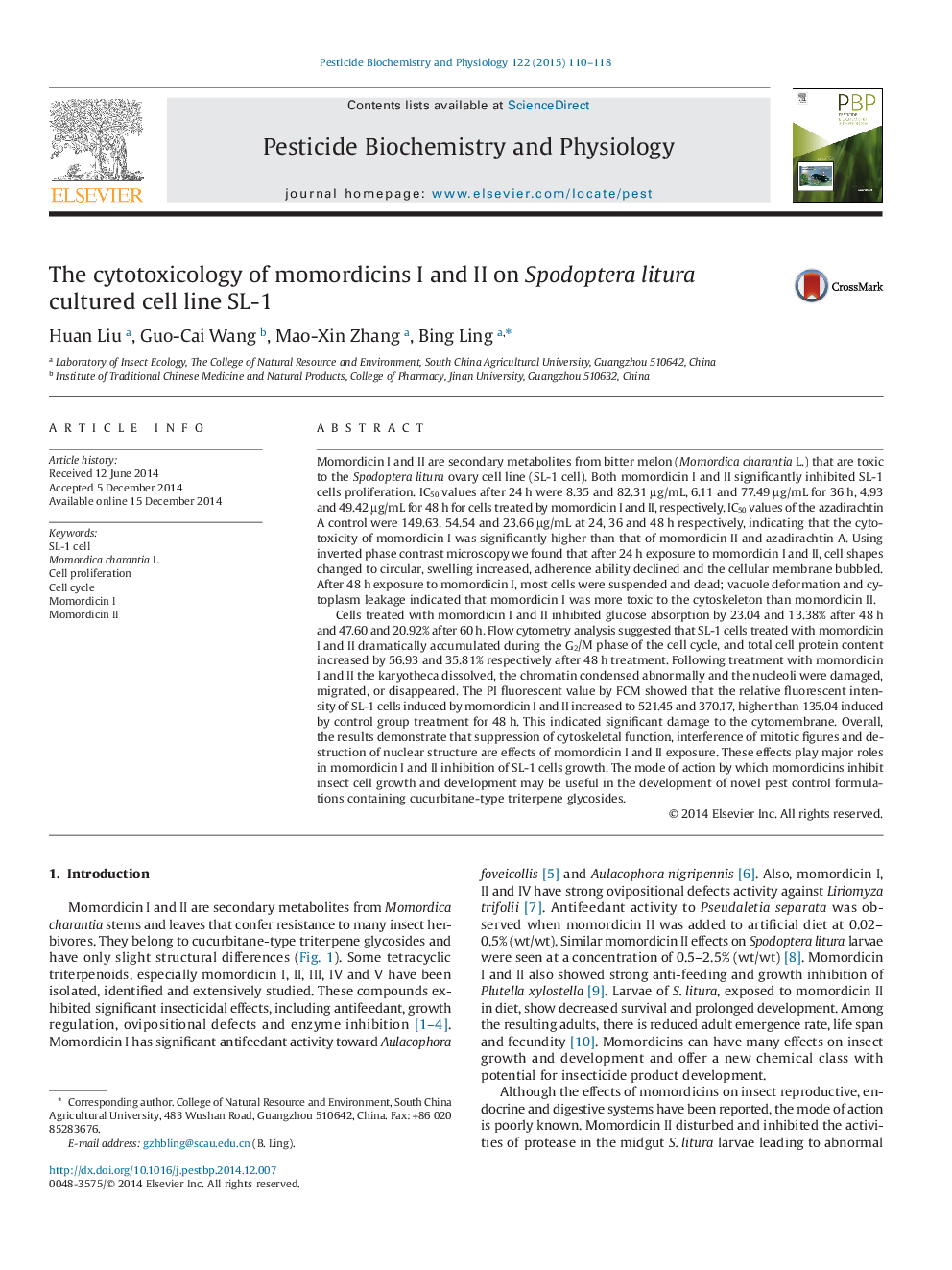| Article ID | Journal | Published Year | Pages | File Type |
|---|---|---|---|---|
| 2009063 | Pesticide Biochemistry and Physiology | 2015 | 9 Pages |
•In vitro cytotoxicity of momordicin I and II were evaluated.•Momordicin I and II could suppress SL-1 cells' cytoskeletal function, interfere mitotic figure and damage nuclear structure.•Momordicin I and II dramatically arrested SL-1 cell cycle at G2/M phase.•The cytotoxicity of momordicin I is much higher than that of momordicin II.
Momordicin I and II are secondary metabolites from bitter melon (Momordica charantia L.) that are toxic to the Spodoptera litura ovary cell line (SL-1 cell). Both momordicin I and II significantly inhibited SL-1 cells proliferation. IC50 values after 24 h were 8.35 and 82.31 µg/mL, 6.11 and 77.49 µg/mL for 36 h, 4.93 and 49.42 µg/mL for 48 h for cells treated by momordicin I and II, respectively. IC50 values of the azadirachtin A control were 149.63, 54.54 and 23.66 µg/mL at 24, 36 and 48 h respectively, indicating that the cytotoxicity of momordicin I was significantly higher than that of momordicin II and azadirachtin A. Using inverted phase contrast microscopy we found that after 24 h exposure to momordicin I and II, cell shapes changed to circular, swelling increased, adherence ability declined and the cellular membrane bubbled. After 48 h exposure to momordicin I, most cells were suspended and dead; vacuole deformation and cytoplasm leakage indicated that momordicin I was more toxic to the cytoskeleton than momordicin II.Cells treated with momordicin I and II inhibited glucose absorption by 23.04 and 13.38% after 48 h and 47.60 and 20.92% after 60 h. Flow cytometry analysis suggested that SL-1 cells treated with momordicin I and II dramatically accumulated during the G2/M phase of the cell cycle, and total cell protein content increased by 56.93 and 35.81% respectively after 48 h treatment. Following treatment with momordicin I and II the karyotheca dissolved, the chromatin condensed abnormally and the nucleoli were damaged, migrated, or disappeared. The PI fluorescent value by FCM showed that the relative fluorescent intensity of SL-1 cells induced by momordicin I and II increased to 521.45 and 370.17, higher than 135.04 induced by control group treatment for 48 h. This indicated significant damage to the cytomembrane. Overall, the results demonstrate that suppression of cytoskeletal function, interference of mitotic figures and destruction of nuclear structure are effects of momordicin I and II exposure. These effects play major roles in momordicin I and II inhibition of SL-1 cells growth. The mode of action by which momordicins inhibit insect cell growth and development may be useful in the development of novel pest control formulations containing cucurbitane-type triterpene glycosides.
Graphical AbstractFigure optionsDownload full-size imageDownload as PowerPoint slide
